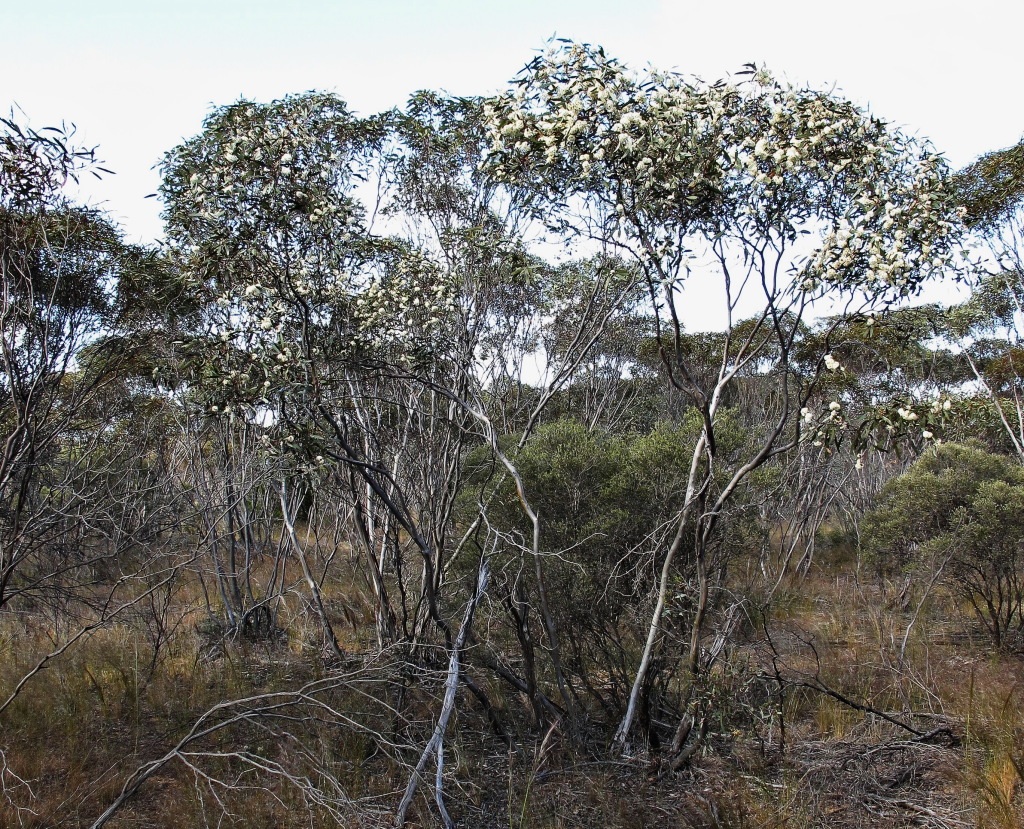Eucalyptus calycogona subsp. trachybasis
NicolleMallee; bark generally rough for 0.5–2.5 m from base, finely fissured, tessellated, brown to grey, upper trunk and branches smooth-barked, occasionally smooth throughout. Juvenile leaves petiolate, alternate, lanceolate to narrowly lanceolate, to 8 cm long, 1 cm wide, dull green; adult leaves petiolate, alternate, lanceolate to narrowly lanceolate, 6–10 cm long, 1–2 cm wide, concolorous, glossy, green; reticulation obscured by large oil glands, side veins acute, particularly at base. Inflorescences axillary, unbranched; peduncles to 1.2 cm long, 7-flowered; buds with pedicels widening to a 4-sided hypanthium, to 1.5 cm long, 0.5 cm diam., scar present; operculum pyramidal, conical or beaked; stamens ascending and flexed tangentially, then inflexed, much twisted in flower; anthers basifixed, cuboid or globoid; ovules in 4 vertical rows; flowers creamy-white. Fruit pedicellate, truncate-ovoid or urceolate, more or less square in cross-section, to 0.8 cm long, 0.5 cm diam.; disc vertically descending; valves 3(4), below rim; seed pale red-brown, flattened-ellipsoid, smooth with longitudinal grooves, hilum ventral. Flowers Aug.–Nov.
LoM, MuM, Wim, MuF, GGr. Also SA, NSW. In Victoria in mallee scrubs north from Edenhope and west from Boort and Kerang.
There may be some intergradation with E. gracilis with which it often occurs, but generally it is distinguished from that species by the 4-sided buds and fruits.
Nicolle (2000) recognised four geographically segregated subspecies but regarded E. calycogona subsp. trachybasis, distinguished by the rough bark on the lower trunk, as the only Victorian representative of the species. However, smooth-barked mallees that conform to the description of E. calycogona subsp. calycogona) are not uncommon in the Big Desert area. They are included here in subsp. trachybasis despite this apparently anomalous feature.
 Spinning
SpinningNicolle, D. (2000). A review of the Eucalyptus calycogona group (Myrtaceae) including the description of three new taxa from southern Australia. Nuytsia 13: 303–315.


